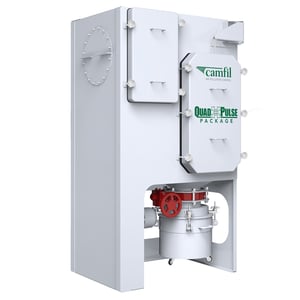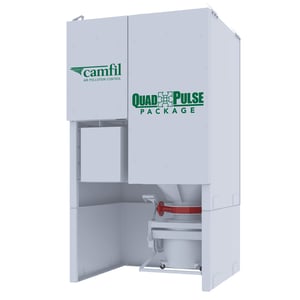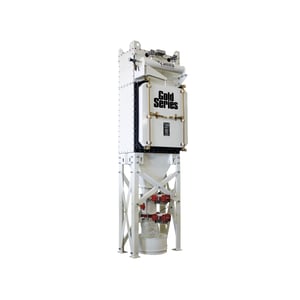Oral solid dosage products (OSD) such as tablets, pills or capsules contains Active Pharmaceutical Ingredients (API). These API create very fine dusts and often high solvent concentrations during the product handling and manufacturing processes. To protect worker´s health and to avoid cross-contamination of products, an effective filtration combined with containment solutions is required.
In many instances, the handling of pharmaceutical ingredients generate harmful dusts during the manufacturing and packaging processes of Oral Solid Dosage (OSD) products. To comply with the industry´s stringent health and safety requirements while meeting mandatory quality requirements a reliable and efficient capture and extraction solution is required. Before considering a dust extraction solution it is important to fully understand the application and processed ingredients.
Typical applications: Tablet pressing, tablet coating, fluid bed drying, spray drying, blending, granulation
Handled ingredients: Powders, granular ingredients, active pharmaceutical ingredients (API), solvents
A comprehensive risk assessment of each and every application is essential before establishing the requirements for the right extraction solution.
The questions that need answering when analysing the potential risks associated with dusts generated in the workplace include the following:
If you are uncertain or don´t have all the relevant data, it´s recommended to evaluate the properties of the processed material. Besides analysing the dust characteristic, it also makes sense to perform a dust hazard analysis to evaluate the risk for employee exposure and a dust explosion & flammability test, which can be required according to ATEX-directives.
There are three critical areas for consideration and risk assessment when handling pharmaceutical dusts:
Personnel exposure to potent, toxic or allergenic dusts
The more potent the dust the lower the exposure limits set for personnel coming into contact with the materials. It is the employers’ responsibility to know and understand the exposure limits for each product they are using, and take the necessary steps to ensure the limits are not exceeded.
Cross-contamination of products
Airborne dust can have negative effects on the quality of your products and lead to non-compliance with authorities like the Food and Drug Administration (FDA), European Medicines Agency (EMA) or Medicines and Healthcare products Regulatory Agency (MHRA). Worst-case scenarios are product call-backs and brand damage.

Combustion risk and dust explosions
In pharmaceutical manufacturing, it is common to extract process air containing combustible dusts, flammable gases, mists and vapors, a mixture of some or all of these. Containing such an explosive atmosphere in a sealed environment (such as a dust collector) with an ignition source and you have all the necessary constituent parts for an explosion to occur.
There is a growing trend for pharmaceutical ingredients, particularly Active Pharmaceutical Ingredients (APIs), to consist of smaller molecules to provide faster reactions and greater potency. Solvents are often used in the processing phases. Whilst providing significant benefits in terms of drug delivery and performance, it creates a number of challenges for pharma manufacturers and their production processes:

Containment:
Another critical consideration and one which is often overlooked, involves effective containment of potent dusts. Once the airborne dust is captured at source, it needs to be contained at every stage of the extraction process. Containment is also essential during maintenance of the dust collector unit. Especially for potent dusts there should be a specific and integral safe change operation for both the dust discharge system and the filter cartridge change-out. The so called Bag-In/Bag-Out (BIBO) technology is used to prevent operator exposure and the collected material from escaping when performing filter change-outs. The continuous liner technology is used at the discharge system to contain the dust released from the cartridges to the hopper during automatic pulse-cleaning of the system.
Explosion Protection:
If the dust is considered to be combustible or explosive, there are certain values that need to be determined in order to select the correct and ATEX-certified explosion protection system for each dust collector. The goal of these systems are to control an explosion, to keep employees safe, and minimise plant and equipment damage.


